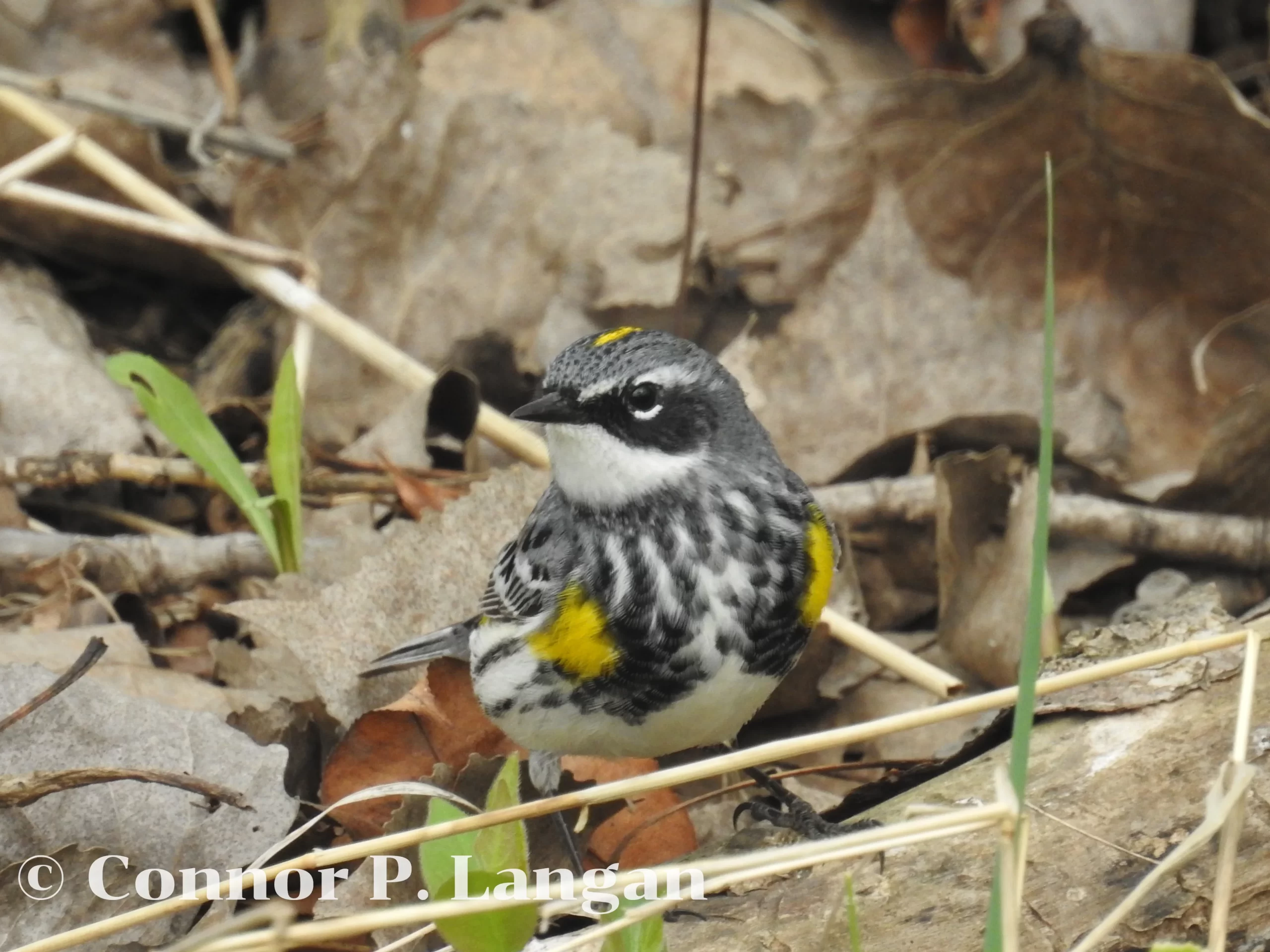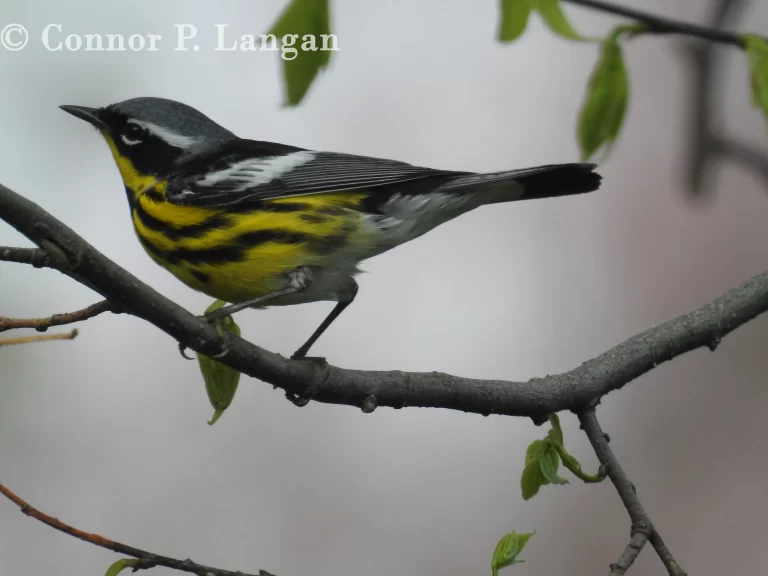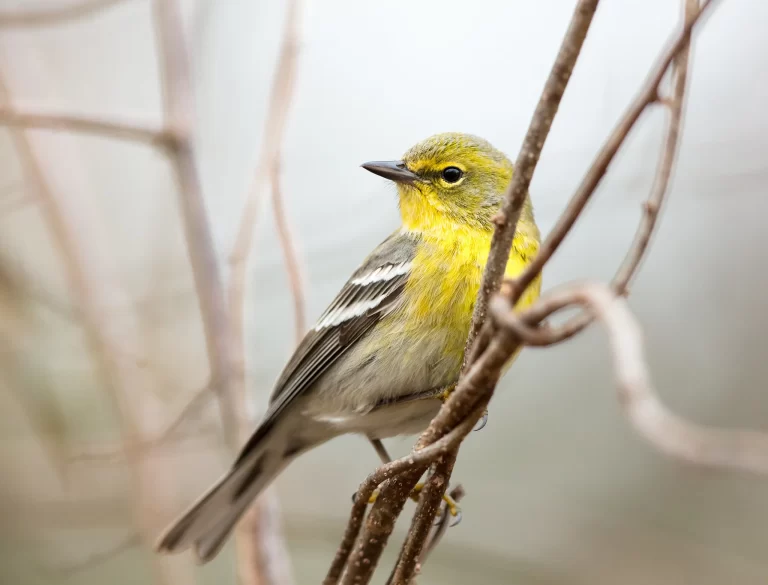Description
Perhaps the most common warbler in the United States and Canada, Yellow-rumped Warblers are large warblers with variable appearances. There are four Yellow-rumped Warbler subspecies, with all birds having the namesake yellow rumps.
Yellow-rumped Warblers are large as far as warblers go, with birds measuring 4.75 to 5.5 inches long and weighing between 0.4 to 0.5 ounces.
The Audubon’s subspecies of Yellow-rumped Warbler features male birds with yellow throats, crowns, and flanks, mottled gray, black, and white undersides, gray backs with black streaks, and black and white wings.
Female Audubon’s Warblers also have yellow throats, crowns, and flanks. They are a darker gray overall than males, and they have black streaks throughout much of their bodies.
Males of the Myrtle subspecies have white throats, yellow crowns and flanks, black and white undersides, gray backs with black streaking, and black and white wings.
Female Myrtle Warblers have white throats, yellow flanks, white undersides with black streaking, gray backs, and black and white wings.
Immature Myrtle Warblers look much like females, but they tend to have less streaking and a brown-gray color.
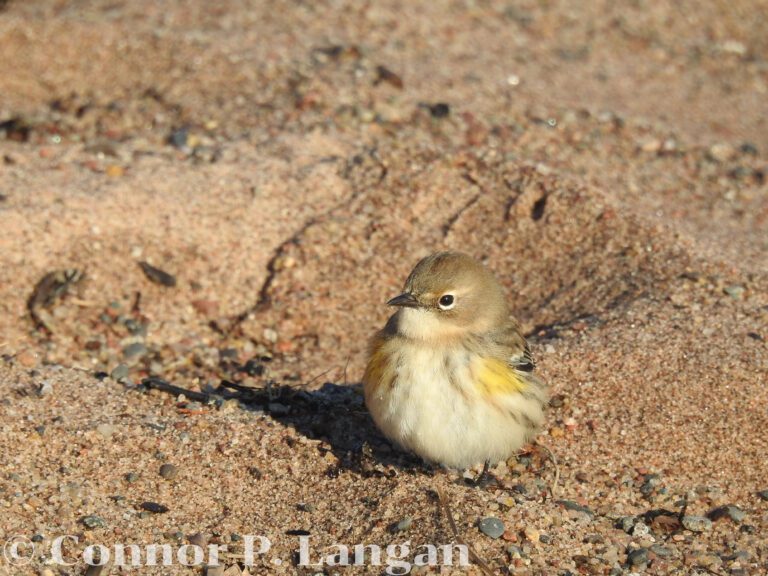
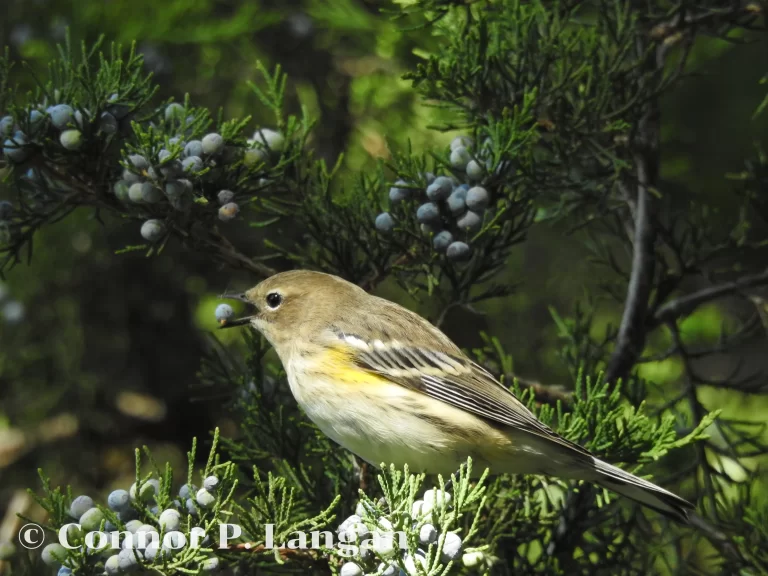
Behavior
Yellow-rumped Warblers may be observed foraging along the ground or high in a tree canopy. They are tame birds that can be readily approached.
Yellow-rumped Warblers associate with large groups of songbirds on their wintering grounds. They loosely associate with other songbirds during migration as well, but during the breeding season, individuals tend to only associate with their mate.
Diet
A Yellow Rumped Warbler diet is notable for a warbler. During the breeding season, this species primarily consumes insects.
Yellow-rumped Warblers may eat insects or fruit during migration, but during the winter, they transition to a diet of almost entirely fruit. These birds also eat a few varieties of seeds.
Habitat
These warblers breed in tracts of coniferous forests. During migration, look for Yellow-rumped Warblers in woodlots, parks, suburbs, lakeshores, shelterbelts, and even areas with minimal tree cover such as early successional habitats.
In the winter, Yellow-rumped Warblers survive in woodlots, residential areas, tracts of forest, parks, coffee or cacao plantations, or mangrove forests.
Range
Yellow rumped Warbler range is the most northerly wintering range of any warbler species thanks to their diets. This species can survive as far north as areas of the Midwest and the Pacific Northwest.
The different subspecies of Yellow-rumped Warblers do not tend to overlap much, with each being more or less confined to their own specific ranges. Typically, Audubon’s Yellow-rumped Warblers occur west of the Great Plains, while Myrtle Yellow-rumped Warblers occur east of the Great Plains.
Yellow-rumped Warblers have a massive distribution during summer, being found in the northern reaches of Alaska to as far south as New Mexico. This species breeds in the Upper Midwest, the Northeastern United States, the Rocky Mountains, the mountains of the American Southwest, and throughout most of Canada.
Breeding
These warblers are monogamous by nature, with males singing to defend the territory during the breeding season and females managing the nest responsibilities. Males will occasionally bring nesting materials to their mate.
A female Yellow rumped Warbler constructs her nest in coniferous trees. These birds do not seem to be picky about the elevation of the nest, as they may be just off the ground or 50 feet up in a tree.
Females construct cup-shaped nests using small branches, grasses, lichens, and plant fibers. The interior of the nest is lined with hair, feathers, and other soft materials. Building the nest is a big undertaking, as a female Yellow rumped Warbler typically spends around 10 days building a nest.
A female Yellow-rumped Warbler may have 1 to 2 broods of eggs each year, with 1 to 6 eggs being laid per clutch. Eggs hatch in just under 2 weeks, and the nestlings fledge 10 to 14 days later.
Backyard Birding
These common warbler species may visit backyards that offer suet, fruit, or peanut butter, so watch for this species to stop by during migration or winter.
If you have a collection of different trees and shrubs in your yard, there is a good chance that a Yellow-rumped Warbler will stop by during migration. Watch for this species to use a birdbath on your property if you offer one.
Population Status
Populations of Yellow-rumped Warblers have fared well in recent decades, as these warblers have not experienced the declines that have impacted many other warbler species. Around 170 million Yellow-rumped Warblers exist today.

